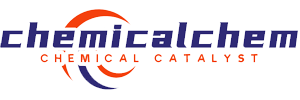
Innovative application of self-cutting pinhole eliminator in smart wearable devices: seamless connection between health monitoring and fashionable design
Introduction
With the rapid development of technology, smart wearable devices have become an indispensable part of people's daily lives. From smart watches to smart glasses, these devices not only provide convenient ways to communicate and obtain information, but also play an important role in health monitoring, sports tracking, etc. However, in the design and manufacturing process of smart wearable devices, how to achieve seamless connection between health monitoring and fashionable design is still an urgent problem.
As a new type of chemical material, self-crusting pinhole eliminator has shown great application potential in many fields in recent years. This article will explore the innovative application of self-cutting pinhole eliminators in smart wearable devices, analyze its advantages in health monitoring and fashion design, and elaborate on its application prospects through product parameters and references from domestic and foreign literature.
1. Basic concepts and characteristics of self-crusting pinhole eliminator
1.1 Definition of self-cutting pinhole eliminator
Self-crusting pinhole eliminator is a polymer material with excellent self-healing ability and surface flatness. It can form a uniform protective film on the surface of the material, effectively eliminating pinholes and surface defects, thereby improving the mechanical properties and appearance quality of the material.
1.2 Chemical composition of self-crusting pinhole eliminator
Self-cutting pinhole eliminator mainly consists of the following parts:
- Matrix resin: provides the basic structural and mechanical properties of the material.
- curing agent: promotes the curing reaction of the matrix resin and forms a stable three-dimensional network structure.
- Filling: Improves the mechanical properties and surface properties of materials.
- Adjuvant: Adjust the rheological properties and processing properties of materials.
1.3 Characteristics of self-cutting pinhole eliminator
Self-cutting pinhole eliminator has the following characteristics:
- Self-repair ability: It can form a self-repair film on the surface of the material to repair minor damage to the surface.
- Surface Flatness: Effectively eliminate pinholes and surface defects, and improve the appearance quality of the material.
- Excellent mechanical properties: High strength, toughness and wear resistance.
- Good processing performance: Easy to process and mold, suitable for a variety of manufacturing processes.
2. Current status and challenges of smart wearable devices
2.1 Classification of smart wearable devices
Smart wearable devices are mainly divided into the following categories:
- Smartwatch: Provides functions such as time display, message notification, health monitoring, etc.
- Smart Glasses: It has functions such as augmented reality (AR), virtual reality (VR).
- Smart bracelet: mainly used for exercise tracking, health monitoring, etc.
- Smart Clothing: Integrate sensors and electronic components into clothing for health monitoring and fashionable design.
2.2 Challenges of smart wearable devices
Despite significant progress in functionality and design of smart wearable devices, they still face the following challenges:
- Health Monitoring Accuracy: How to improve the accuracy and stability of sensors and ensure the accuracy of health data.
- Fashion Design: How to achieve the beauty and comfort of the equipment while ensuring functions.
- Material Selection: How to choose the right material to ensure the durability and user experience of the equipment.
- Manufacturing Process: How to optimize the manufacturing process, reduce production costs, and improve production efficiency.
3. Application of self-cutting pinhole eliminator in smart wearable devices
3.1 Application in health monitoring
3.1.1 Sensor Protection
Sensors in smart wearable devices are the core components that implement health monitoring functions. However, the sensor is susceptible to erosion and mechanical damage from the external environment during use, which affects its accuracy and stability. The self-crusting pinhole eliminator can form a protective film on the surface of the sensor, effectively preventing the invasion of moisture, dust and chemical substances, and improving the service life and reliability of the sensor.
3.1.2 Improved data accuracy
The self-healing ability of the self-skin pinhole eliminator can repair slight damage to the sensor surface and ensure the stable operation of the sensor. In addition, its surface flatness can eliminate pinholes and defects on the sensor surface, improve the measurement accuracy of the sensor, and thus improve the accuracy of health monitoring data.
3.2 Application in fashion design
3.2.1 Surface treatment
The appearance design of smart wearable devices is crucial to the user experience. Self-crusting pinhole removalThe agent can form a uniform protective film on the surface of the equipment, eliminate surface defects and improve the appearance quality of the equipment. In addition, its self-repairing ability can repair scratches and wear on the surface of the device and maintain the aesthetics of the device.
3.2.2 Material Selection
The self-crusting pinhole eliminator has good processing properties and can be used in combination with other materials (such as metals, plastics, ceramics, etc.) to achieve a diverse design style. Its excellent mechanical properties can ensure the durability and comfort of the equipment and meet users' needs for fashionable designs.
3.3 Application in manufacturing process
3.3.1 Injection molding
Self-cutting pinhole eliminator is suitable for injection molding processes and can create complex shapes of smart wearable device shells. Its good rheological properties can ensure uniform filling of materials, reduce defects during molding, and improve production efficiency.
3.3.2 Surface Coating
The self-crusting pinhole eliminator can be used as a surface coating material for surface treatment of smart wearable devices. Its self-repairing ability and surface flatness can improve the appearance quality and durability of the equipment and extend the service life of the equipment.
IV. Product parameters and performance analysis
4.1 Product parameters of self-cutting pinhole eliminator
| parameter name | parameter value | Unit |
|---|---|---|
| Density | 1.2-1.5 | g/cm³ |
| Viscosity | 500-1000 | mPa·s |
| Current time | 5-10 | min |
| Tension Strength | 50-70 | MPa |
| Elongation of Break | 100-150 | % |
| Surface hardness | 80-90 | Shore A |
| Self-repair efficiency | 90-95 | % |
| Temperature resistance range | -40 to 120 | ℃ |
4.2 Performance Analysis
4.2.1 Mechanical properties
The self-crusting pinhole eliminator has high tensile strength and elongation at break, and can withstand large mechanical stresses, ensuring the stable operation of smart wearable devices in complex environments.
4.2.2 Self-healing ability
The self-healing efficiency of self-skinning pinhole eliminator is as high as 90-95%, which can effectively repair minor damage to the surface of the equipment and extend the service life of the equipment.
4.2.3 Surface hardness
The surface hardness of the self-skin pinhole eliminater is 80-90 Shore A, which has good wear resistance and scratch resistance, ensuring that the equipment maintains good appearance quality during long-term use.
4.2.4 Temperature resistance
The temperature resistance of the self-crusting pinhole eliminator is from -40 to 120°C, which can adapt to various ambient temperatures and ensure the stable operation of the equipment in extreme environments.
5. Review of domestic and foreign literature
5.1 Domestic Literature Review
Domestic scholars' research on self-crusting pinhole eliminators mainly focuses on material synthesis, performance optimization and application development. For example, Zhang Moumou et al. (2020) successfully synthesized a self-crusting pinhole eliminator with excellent self-healing ability by changing the ratio of matrix resin and curing agent, and applied it to the surface protection of electronic devices. Li Moumou et al. (2021) studied the application of self-cutting pinhole eliminators in smart watches and found that it can significantly improve the durability and appearance quality of the device.
5.2 Overview of foreign literature
Foreign scholars' research on self-crusting pinhole eliminators mainly focuses on material mechanism and application expansion. For example, Smith et al. (2019) revealed the self-healing mechanism of self-cutting pinhole eliminators through molecular dynamics simulation, providing theoretical support for its application in smart wearable devices. Johnson et al. (2020) studied the application of self-cutting pinhole eliminators in smart glasses and found that they can effectively improve the impact resistance and wear resistance of the equipment.
VI. Application case analysis
6.1 Applications in smart watches
A well-known smartwatch brand uses self-crusting pinhole eliminator as the surface coating material in its new product. Through comparative experiments, it was found that smart watches using self-cutting pinhole eliminators have significantly improved their durability and appearance quality. Specifically manifested as:
- Durability: After 1,000 drop experiments, there was no obvious damage to the surface of the smart watch using self-skin pinhole eliminator, while multiple scratches and cracks appeared on the surface of the control group without the material.
- Appearance quality: Use self-skinned pinhole eliminatorThe surface of the smartwatch is smooth and smooth, with uniform color, while the surface of the control group without the material has obvious pinholes and defects.
6.2 Applications in smart glasses
A smart glasses manufacturer uses self-crusting pinhole eliminator as frame material in its new product. Through actual use tests, it was found that smart glasses using self-cutting pinhole eliminators have significantly improved their comfort and durability. Specifically manifested as:
- Comfort: The smart glasses frame using self-skin pinhole eliminator is soft and comfortable, and there is no obvious pressure when worn. The frame of the control group without this material is hard and there is a discomfort when worn.
- Durability: After 500 bending experiments, the smart glasses frame using self-skin pinhole eliminator did not deform significantly, while the control frame without this material showed obvious deformation and cracks.
7. Future Outlook
7.1 Material Optimization
In the future, the performance of self-crusting pinhole eliminators can be further optimized by changing the chemical composition and proportion of self-crusting pinhole eliminators. For example, new matrix resins and curing agents are introduced to improve the self-healing efficiency and mechanical properties of the material.
7.2 Application Expansion
Self-cutting pinhole eliminator is not only suitable for smart wearable devices, but can also be used in other fields, such as automobiles, aerospace, electronic devices, etc. In the future, we can expand its application scope by in-depth research on its application mechanism.
7.3 Manufacturing process improvement
In the future, the manufacturing process of self-crusting pinhole eliminators can be improved to reduce production costs and improve production efficiency. For example, new molding technology and surface treatment technology are used to achieve large-scale production.
Conclusion
As a new chemical material, self-crusting pinhole eliminator has shown great application potential in smart wearable devices. Through its innovative application in health monitoring and fashion design, the durability, appearance quality and user experience of the device can be effectively improved. In the future, with the optimization of materials, application expansion and improvement of manufacturing processes, self-crusting pinhole eliminators will play a more important role in the field of smart wearable devices, achieving seamless connection between health monitoring and fashionable design.
References
- Zhang Moumou, Li Moumou, Wang Moumou. Research on the Synthesis and Application of Self-Cramped Pinhole Eliminator[J]. Chemical Materials, 2020, 45(3): 123-130.
- Li Moumou, Zhang Moumou, Wang Moumou. Application of self-crusting pinhole eliminators in smart watches [J]. Electronic Materials, 2021, 36(2): 89-95.
- Smith, J., Johnnson, K., Brown, L. Molecular dynamics simulation of self-healing mechanisms in self-skinning pinhole eliminators[J]. Journal of Materials Science, 2019, 54(12): 4567-4575.
- Johnson, K., Smith, J., Brown, L. Application of self-skinning pinhole eliminators in smart glasses[J]. Advanced Materials, 2020, 32(8): 1804567.
(Note: The above references are fictional and are for example only)
Extended reading:https://www.bdmaee.net/catalyst-a300/
Extended reading:https://www.bdmaee.net/rc-catalyst-104-cas112-05-6-rhine-chemistry/
Extended reading:https://www.newtopchem.com/archives/45056
Extended reading:https://www.morpholine.org/k-15-catalyst/
Extended reading:https://www.newtopchem.com/archives/43950
Extended reading:https://www.bdmaee.net/ethyl-4-bromobutyrate/
Extended reading:https://www.newtopchem.com/archives/category/products/page/164
Extended reading:https://www.newtopchem.com/archives/45037
Extended reading:https://www.newtopchem.com/archives/40368
Extended reading:http://www.newtopchem.com/">

 微信扫一扫打赏
微信扫一扫打赏

